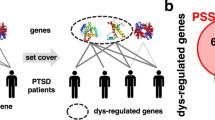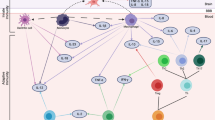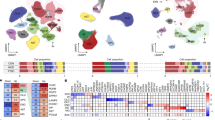Abstract
Transcriptome-wide screens of peripheral blood during the onset and development of posttraumatic stress disorder (PTSD) indicate widespread immune dysregulation. However, little is known as to whether biological sex and the type of traumatic event influence shared or distinct biological pathways in PTSD. We performed a combined analysis of five independent PTSD blood transcriptome studies covering seven types of trauma in 229 PTSD and 311 comparison individuals to synthesize the extant data. Analyses by trauma type revealed a clear pattern of PTSD gene expression signatures distinguishing interpersonal (IP)-related traumas from combat-related traumas. Co-expression network analyses integrated all data and identified distinct gene expression perturbations across sex and modes of trauma in PTSD, including one wound-healing module downregulated in men exposed to combat traumas, one IL-12-mediated signaling module upregulated in men exposed to IP-related traumas, and two modules associated with lipid metabolism and mitogen-activated protein kinase activity upregulated in women exposed to IP-related traumas. Remarkably, a high degree of sharing of transcriptional dysregulation across sex and modes of trauma in PTSD was also observed converging on common signaling cascades, including cytokine, innate immune, and type I interferon pathways. Collectively, these findings provide a broad view of immune dysregulation in PTSD and demonstrate inflammatory pathways of molecular convergence and specificity, which may inform mechanisms and diagnostic biomarkers for the disorder.
Similar content being viewed by others
Log in or create a free account to read this content
Gain free access to this article, as well as selected content from this journal and more on nature.com
or
References
Breen MS, Maihofer AX, Glatt SJ, Tylee DS, Chandler SD, Tsuang MT et al (2015). Gene networks specific for innate immunity define post-traumatic stress disorder. Mol Psychiatry 20: 1538–1545.
Breen MS, Stein DS, Baldwin D (2016). Systematic review of blood transcriptome profiling in neuropsychiatric disorders: guidelines for biomarker discovery. Hum Psychopharmacol 31: 373–381.
Chen J, Bardes E, Aronow B, Jegga A (2015). ToppGene Suite for gene list enrichment analysis and candidate gene prioritization. Nucleic Acids Res 37: W305–W311.
Cohen S, Janicki-Deverts D, Doyle WJ, Miller GE, Frank E, Rabin BS et al (2016). Chronic stress, glucocorticoid receptor resistance, inflammation, and disease risk. Proc Natl Acad Sci USA 109: 5995–5999.
Daskalakis N, Cohen H, Nievergelt CM, Baker DG, Buxbaum JD, Russo SJ et al (2016). New translational perspectives for blood-based biomarkers of PTSD: from glucocorticoid to immune mediators of stress susceptibility. Exp Neurol 284: 133–140.
Diaz-Beltran L, Esteban F, Wall D (2016). A common molecular signature in ASD gene expression: following Root 66 to autism. Transl Psychiatry 6: e705.
DiGangi J, Gomez D, Mendoza L, Jason LA, Keys CB, Koenen KC (2013). Pretrauma risk factors for posttraumatic stress disorder: a systematic review of the literature. Clin Psychol Rev 33: 728–744.
Elenkov I, Wilder R, Chrousos G, Vizi E (2000). The sympathetic nerve—an integrative interface between two supersystems: the brain and the immune system. Pharmacol Rev 52: 595–638.
Felger J, Lotrich F (2013). Inflammatory cytokines in depression: neurobiological mechanisms and therapeutic implications. Neuroscience 246: 199–229.
Franceschini A, Szklarczyk D, Frankild S, Kuhn M, Simonovic M, Roth A et al (2012). STRING v9.1: protein-protein interaction networks, with increased coverage and integration. Nucleic Acids Res 41: D808–D815.
Freidenberg B, Gusmano R, Hickling EJ, Blanchard EB, Bremner JD, Frye C (2010). Women with PTSD have lower basal salivary cortisol levels later in the day than do men with PTSD: a preliminary study. Physiol Behav 99: 234–236.
Galliher-Beckley A, Williams J, Cidlowski J (2011). Ligand-independent phosphorylation of the glucocorticoid receptor integrates cellular stress pathways with nuclear receptor signaling. Mol Cell Biol 31: 4663–4675.
Gill J, Saligan L, Woods S, Page G (2009). PTSD is associated with an excess of inflammatory immune activities. Perspect Psychiatr Care 45: 262–277.
Glatt SJ, Tylee DS, Chandler SD, PAzol J, Nievergelt CM, Woelk CH et al (2015). Blood-based gene-expression predictors of PTSD risk and resilience among deployed marines: a pilot study. Am J Med Genet B Neuropsychiatr Genet 162: 313–326.
Hess J, Tylee DS, Barve R, de Jong S, Ophoff RA, Kumarasinghe N et al (2016). Transcriptome-wide mega-analyses reveal joint dysregulation of immunologic genes and transcription regulators in brain and blood in schizophrenia. Schizophr Res 176: 114–124.
Kayala M, Baldi P (2012). Cyber-T web server: differential analysis of high-throughput data. Nucleic Acids Res 40: W553–W559.
Kessler R (1995). Posttraumatic stress disorder in the national comorbidity survey. Arch Gen Psychiatry 52: 1048.
Langfelder P, Horvath S (2008). WGCNA: an R package for weighted correlation network analysis. BMC Bioinformatics 9: 559.
Langfelder P, Luo R, Oldham M, Horvath S (2011). Is my network module preserved and reproducible? PLoS Comput Biol 7: e1001057.
Leek J, Johnson W, Parker H, Jaffe A, Storey J (2015). The sva package for removing batch effects and other unwanted variation in high-throughput experiments. Bioinformatics 28: 882–883.
Mehta D, Klengel T, Conneely KN, Smith AK, Altmann A, Pace TW et al (2013). Childhood maltreatment is associated with distinct genomic and epigenetic profiles in posttraumatic stress disorder. Proc Natl Acad Sci USA 110: 8302–8307.
Michopoulos V, Norrholm S, Jovanovic T (2015). Diagnostic biomarkers for posttraumatic stress disorder: promising horizons from translational neuroscience research. Biol Psychiatry 78: 344–353.
Newman A, Long Liu A, Green MR, Gentles AJ, Feng W, Xu Y et al (2015). Robust enumeration of cell subsets from tissue expression profiles. Nat Methods 12: 453–457.
Neylan T, Sun B, Rempel H, Ross J, Lenoci M, O’Donovan A et al (2011). Suppressed monocyte gene expression profile in men versus women with PTSD. Brain Behav Immun 25: 524–553.
Pacák K, Palkovits M (2001). Stressor specificity of central neuroendocrine responses: implications for stress-related disorders. Endocr Rev 22: 502–548.
Page GP, Edwards JW, Gadbury GL, Yelisetti P, Wang J, Trivedi P et al (2006). The PowerAtlas: a power and sample size atlas for microarray experimental design and research. BMC Bioinformatics 7: 84.
Passos IC, Vasconcelos-Moreno MP, Costa LG, Kunz M, Brietzke E, Quevedo J et al (2015). Inflammatory markers in post-traumatic stress disorder: a systematic review, meta-analysis, and meta-regression. Lancet Psychiatry 2: 1002–1012.
Pinero J, Queralt-Rosinach N, Bravo A, Deu-Pons J, Bauer-Mehren A, Baron M et al (2015). DisGeNET: a discovery platform for the dynamical exploration of human diseases and their genes. Database 2015: bav028.
Posma E, Moes H, Heineman M, Faas M (2014). The effect of testosterone on cytokine production in the specific and non-specific immune response. Am J Reprod Immunol 52: 237–243.
Ramchand R, Schell TL, Karney BR, Osilla KC, Bruns RM, Caldarone LB (2010). Disparate prevalence estimates of PTSD among service members who served in Iraq and Afghanistan: possible explanations. J Trauma Stress 23: 59–68.
Reul J (2014). Making memories of stressful events: a journey along epigenetic, gene transcription, and signaling pathways. Front Psychiatry 5: 5.
Ritchie ME, Phipson B, Wu D, Hu Y, Law CW, Shi W et al (2015). limma powers differential expression analyses for RNA-sequencing and microarray studies. Nucleic Acids Res 43: e47–e47.
Sarapas C, Cai G, Bierer LM, Golier JA, Galea S, Ising M et al (2011). Genetic markers for PTSD risk and resilience among survivors of the World Trade Center attacks. Dis Markers 30: 101–110.
Segman R, Shefi N, Goltser-Dubner T, Friedman N, Kaminski N, Shalev AY (2005). Peripheral blood mononuclear cell gene expression profiles identify emergent post-traumatic stress disorder among trauma survivors. Mol Psychiatry 10: 425–425.
Shannon P, Markiel A, Ozier O, Baliga NS, Wang JT, Ramage D et al (2003). Cytoscape: a software environment for integrated models of biomolecular interaction networks. Genome Res 13: 2498–2504.
Silverman M, Pearce B, Biron C, Miller A (2013). Immune modulation of the hypothalamic-pituitary-adrenal (HPA) axis during viral infection. Viral Immunol 18: 41–78.
Silverman M, Sternberg E (2012). Glucocorticoid regulation of inflammation and its functional correlates: from HPA axis to glucocorticoid receptor dysfunction. Ann N Y Acad Sci 1261: 55–63.
Simon R, Lam A, Li MC, Ngan M, Menenzes S, Zhao Y (2007). Analysis of gene expression data using BRB-Array tools. Cancer Inform 2: 11–17.
Söndergaard H, Hansson L, Theorell T (2004). The inflammatory markers C-reactive protein and serum amyloid A in refugees with and without posttraumatic stress disorder. Clin Chim Acta 342: 93–98.
Tylee DS, Chandler SD, Nievergelt CM, Liu X, Pazol J, Woelk CH et al (2015). Blood-based gene-expression biomarkers of post-traumatic stress disorder among deployed marines: a pilot study. Psychoneuroendocrinology 51: 472–494.
Tylee DS, Jess JL, Quinn TP, Barve R, Huang H, Zhang-James Y et al (2016). Blood transcriptomic comparison of individuals with and without autism spectrum disorder: a combined-samples mega-analysis. Am J Med Genet B Neuropsychiatr Genet 9999: 1–21.
Whitaker A, Gilpin N, Edwards S (2014). Animal models of post-traumatic stress disorder and recent neurobiological insights. Behav Pharmacol 25: 398–409.
Yehuda R, Halligan S, Grossman R, Golier J, Wong C (2002). The cortisol and glucocorticoid receptor response to low dose dexamethasone administration in aging combat veterans and holocaust survivors with and without posttraumatic stress disorder. Biol Psychiatry 52: 393–403.
Yu G, Li F, Qin Y, Bo X, Wu Y, Wang S (2015). GOSemSim: an R package for measuring semantic similarity among GO terms and gene products. Bioinformatics 26: 976–978.
Acknowledgements
We gratefully acknowledge the individual volunteers and their families, as well as the Marine and Navy volunteers for their military service and for their participation in these studies. Additionally, we thank Segman and colleagues (2005), as well as others, who have placed their data in the public domain. We thank the Marine and Navy volunteers for their military service and for their participation in this study. We also thank Dr Anna Tocheva for further critical reading/assessment of our manuscript.
Author contributions
DST and SJG assembled all the data from independent sources. MSB designed the research question, analyzed the data, and wrote the manuscript with DST. All remaining authors contributed to the generation of the original data and provided critical reading/assessment of the current manuscript.
Author information
Authors and Affiliations
Corresponding author
Additional information
Supplementary Information accompanies the paper on the Neuropsychopharmacology website
Rights and permissions
About this article
Cite this article
Breen, M., Tylee, D., Maihofer, A. et al. PTSD Blood Transcriptome Mega-Analysis: Shared Inflammatory Pathways across Biological Sex and Modes of Trauma. Neuropsychopharmacol. 43, 469–481 (2018). https://doi.org/10.1038/npp.2017.220
Received:
Revised:
Accepted:
Published:
Issue date:
DOI: https://doi.org/10.1038/npp.2017.220
This article is cited by
-
Fear memory regulation by the cAMP signaling pathway as an index of reexperiencing symptoms in posttraumatic stress disorder
Molecular Psychiatry (2024)
-
A primer on the use of machine learning to distil knowledge from data in biological psychiatry
Molecular Psychiatry (2024)
-
Stress-related cellular pathophysiology as a crosstalk risk factor for neurocognitive and psychiatric disorders
BMC Neuroscience (2023)
-
Proteome analysis of monocytes implicates altered mitochondrial biology in adults reporting adverse childhood experiences
Translational Psychiatry (2023)
-
Discovery and replication of blood-based proteomic signature of PTSD in 9/11 responders
Translational Psychiatry (2023)



